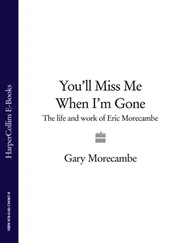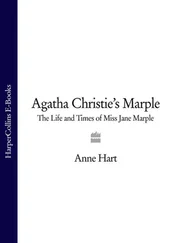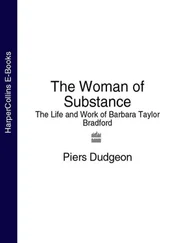1 ...6 7 8 10 11 12 ...19 Ferrers apparently bore Dee a longstanding grudge. In 1578 a suppressed edition of a pamphlet entitled Mirror for Magistrates included a story he wrote apparently lampooning Dee. It described a sorcerer hired by one Elianor Cobham to kill the Queen by sticking pins through a wax effigy of her. The story had a particular resonance at the time, as just such an effigy of Elizabeth had been found (at Lincoln’s Inn Fields, where Ferrers practised as a lawyer), and Dee had been asked by the Privy Council to advise upon its significance. 8
On 5 June, Dee, together with Cary, Benger and Field, was brought before the Secretary of State Sir John Bourne, Francis Englefeld, Sir Richard Read and Doctor Thomas Hughes to be examined on his ‘lewd and vain practises of cal-culing and conjuring’.
This tribunal was made up of Mary’s most loyal supporters. Englefeld was the man she later chose to investigate a conspiracy against Philip. 9 Sir John Bourne was famous as ‘an especial stirrer up in such cases’, having ‘marvellously tossed and examined’ one of the leaders of Wyatt’s Rebellion. And Lord North was popularly reputed to have scoured the streets of London for a pauper’s baby to pass off as the male heir Mary was failing, after ten months of pregnancy, to produce. 10 The atmosphere at Hampton Court was fraught with fears about the true nature of Mary’s ‘pregnancy’, with xenophobia towards the Spanish king Philip, with sectarian fervour, and with intense suspicions of plots being hatched in the palace’s every corridor and chamber.
The examiners demanded that Dee first answer four articles relating to his supposed offences, followed by a further eighteen. A ‘doctor’, probably Thomas Hughes, called for him to be committed to ‘perpetual prison’ on charges that, as Dee later put it, ‘he most unchristianlike and maliciously had devised’. 11 But none of the charges could be substantiated.
A week later, having failed to extract a confession, his interrogators ordered that he be taken under guard by boat from Hampton Court to London, to face Lord Broke, Justice of the Common Pleas. Broke then referred the matter on to the Star Chamber at the Palace of Westminster.
By now the weakness of the case against Dee and his confederates was becoming obvious. Some members of the council were probably mindful that these men were close to Elizabeth who, despite Mary’s hostility, remained heir to the throne. So by July, without a decisive conviction in prospect, they decided to relax the conditions under which the prisoners were held, particularly for Sir Thomas Benger, held at Fleet Prison, named after the fetid Fleet River that carried most of the capital’s sewage past the cell windows into the Thames. On 7 July the Privy Council told the prison warden ‘to permit Sir Thomas Benger to have liberty of the Fleet, and his wife to come unto him at times convenient’. 12
On 29 August 1555, three months after his arrest, Dee was bound over to keep the peace until Christmas of the next year. However, he had not escaped unscathed. He was permanently deprived of his post as rector of Upton, and thus of his living, and he alone of the group was to be handed over for further religious investigation. 13 In other words, he was now suspected of heresy, and the man asked to examine him was the Bishop of London – ‘Bloody’ Bonner himself.
Old St Paul’s Cathedral was far larger than Christopher Wren’s replacement, an immense hulk of Caen stone that had loomed over London for centuries. During Edward’s reign, it had been the focus of London’s religious reforms. In 1549, within the cathedral’s precincts, an ornate chapel and charnel house filled with elaborate marble monuments was torn down by Protestants. The bones found beneath – apparendy amounting to more than a thousand cartloads – had been dumped on the fields of Finsbury north of the city, creating a hill high enough to support three windmills. 1 That same year, the cathedral’s altar and magnificent reredos were destroyed and replaced with a plain table, and the nave was turned into a thoroughfare between Paternoster Row and Carter Lane ‘for people with vessels of ale and beer, baskets of bread, fish, flesh and fruit, men leading mules, horses and other beasts’. 2 With Mary’s accession to the throne, many of these alterations had been reversed, and it was a very different St Paul’s that another heretic approached one autumn morning in 1555, to be examined by Bishop Bonner. The altar had been rebuilt, the animals ejected and an air of reverent hush restored.
The prisoner was John Philpot, and his capture was quite a coup for Bonner. He was the son of a knight, educated at Oxford, widely travelled and highly cultivated, having ‘knowledge of the Hebrew tongue’. He had spent some time at Venice and Padua, but was suspected of being a heretic and forced to leave. In Protestant England, he had advanced quickly to become archdeacon of Winchester. 3
However, following the return of Catholicism, Philpot was arrested in 1554 for refusing to conduct Mass and was imprisoned in Newgate. He remained imprisoned for a year before hearings began.
His first examination was with a panel of Mary’s commissioners on 2 October 1555. According to Foxe’s not entirely impartial account of the event, the commissioners poked fun at Philpot’s weight, implying that even a Protestant with his puritan values was not immune from fleshly temptations. Philpot responded with an impregnable composure that quickly drove his interrogators to distraction. A further examination followed a similar course and ended with one of the commissioners calling him a ‘vile heretic knave’, ordering that he be taken away to face Bonner’s more formidable inquisition.
The Bishop’s palace squatted among the buttresses of St Paul’s south-west side, beneath Lollards’ Tower, one of the cathedral’s two bell towers. Philpot was left in the palace’s coalhouse, which Bonner was using as a temporary prison.
The coalhouse was already filled with fuel for the Smithfield fires – six suspected heretics in all, including a married priest from Essex who had withdrawn a recantation extracted from him after the bishop had ‘buffeted’ his face black and blue. It was probably a worse prison than Newgate. It was windowless, and despite the generous supply of coal, there was no provision for making a fire to provide warmth or light. There was only straw for bedding, and in the dark adjoining chamber, a set of wooden stocks.
The reception Philpot got from the bishop’s staff was quite at odds with the meanness of his accommodation. He was given a ‘mess of meat and good pot of drink’ and copious apologies for the inconvenience of being incarcerated; apparently the bishop had not known of his arrival. A little later, he was brought to the bishop’s private study, where Bonner, sitting alone at a table, was full of bonhomie, offering his hand and suggesting that the whole business was a frightful mistake. ‘I promise you I mean you no more hurt than to mine own person,’ Bonner said. ‘I will not therefore burden you with your conscience as now, I marvel that you are so merry in prison as you be, singing and rejoicing, as the prophet saith, “rejoicing in your naughtiness”.’ 4
Bonner sent him off to be given a glass of ‘good wine’ from the palace cellars, which Philpot enjoyed standing at the cellar door, before being taken back to the coalhouse, ‘where I with my six fellows do rouse together in straw as cheerfully (we thank God) as others do in their beds of down’. 5
A series of other examinations followed, each one taking the form of a polite and learned discussion on theological particulars, conducted in the genteel surroundings of the Bishop’s Palace, and each ending with Philpot being ‘carried’ (i.e. manhandled) back to the coalhouse.
Читать дальше












